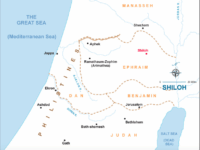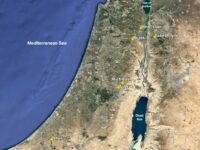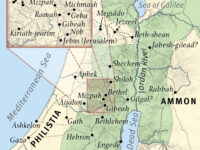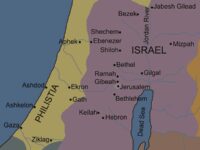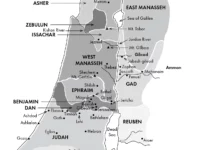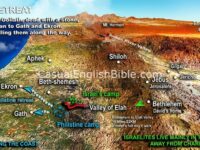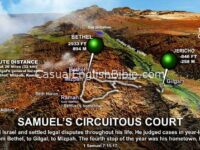The narrative landscape of 1 Samuel unfolds across a geographically specific region of ancient Israel, primarily the central hill country and the Philistine coastal plain. Understanding this geography enhances the appreciation of the events that shape the story.
Shiloh: The story begins in Shiloh, the religious center of Israel during this period. Here, the Ark of the Covenant resided within a sanctuary. Shiloh is where Hannah prayed for a son, Samuel, and where Samuel subsequently served under the priest Eli. Its importance diminishes after the Philistines defeat the Israelites and capture the Ark.
Ramah: Samuel’s hometown and later, his base of operations is Ramah. He judged Israel from Ramah and built an altar to the Lord there. Ramah becomes a center for prophetic activity and a place of refuge and counsel.
Mizpah: Mizpah serves as a gathering place for the Israelites, particularly during times of crisis. Samuel convenes the people at Mizpah to offer sacrifices, pray for deliverance from the Philistines, and reaffirm their covenant with God. It’s a location signifying national unity and repentance.
Philistine Cities (Ashdod, Gath, Ekron, Gaza, Ashkelon): The Philistine pentapolis, comprised of these major cities, dominates much of the conflict in 1 Samuel. After capturing the Ark of the Covenant, the Philistines bring it to Ashdod, then Gath, and finally Ekron, each city experiencing divine plagues as a result. These cities represent the primary external threat to Israelite sovereignty and culture.
Beth Shemesh: When the Philistines decide to return the Ark, it’s sent to Beth Shemesh. The people of Beth Shemesh irreverently look into the Ark, resulting in divine judgment. This underscores the sacredness of the Ark and the importance of proper reverence. From Beth Shemesh, the Ark is relocated to Kirjath Jearim.
Kirjath Jearim: The Ark remains in Kirjath Jearim, at the house of Abinadab, for a significant period – twenty years. This highlights a period of religious neglect and disarray in Israel before Samuel leads the people to repentance.
Gibeah (of Saul): Gibeah, also known as Gibeah of Benjamin, becomes the royal city under Saul. It’s Saul’s hometown and the center of his relatively weak kingdom. Events here reveal Saul’s character flaws and ultimately contribute to his downfall.
Gilgal: Gilgal is a significant location for Saul’s early military victories. He is crowned King there, and later is condemned by Samuel there for his disobedience. Gilgal represents a place of renewal but also a stage for Saul’s rejection.
The Wilderness of Ziph and Maon: David spends considerable time as a fugitive, hiding from Saul in the wilderness regions of Ziph and Maon. These arid areas become the backdrop for David’s resourcefulness, his dependence on God, and the constant threat of betrayal.
En Gedi: Another location where David hides from Saul. The caves of En Gedi provide David with an opportunity to kill Saul but he refuses to strike the Lord’s anointed, displaying his respect for God’s authority.
These locations are interwoven throughout the narrative of 1 Samuel, each contributing to the story’s themes of leadership, obedience, faith, and the struggle for national identity. Visualizing these locations helps connect the biblical text to the physical reality of ancient Israel.


